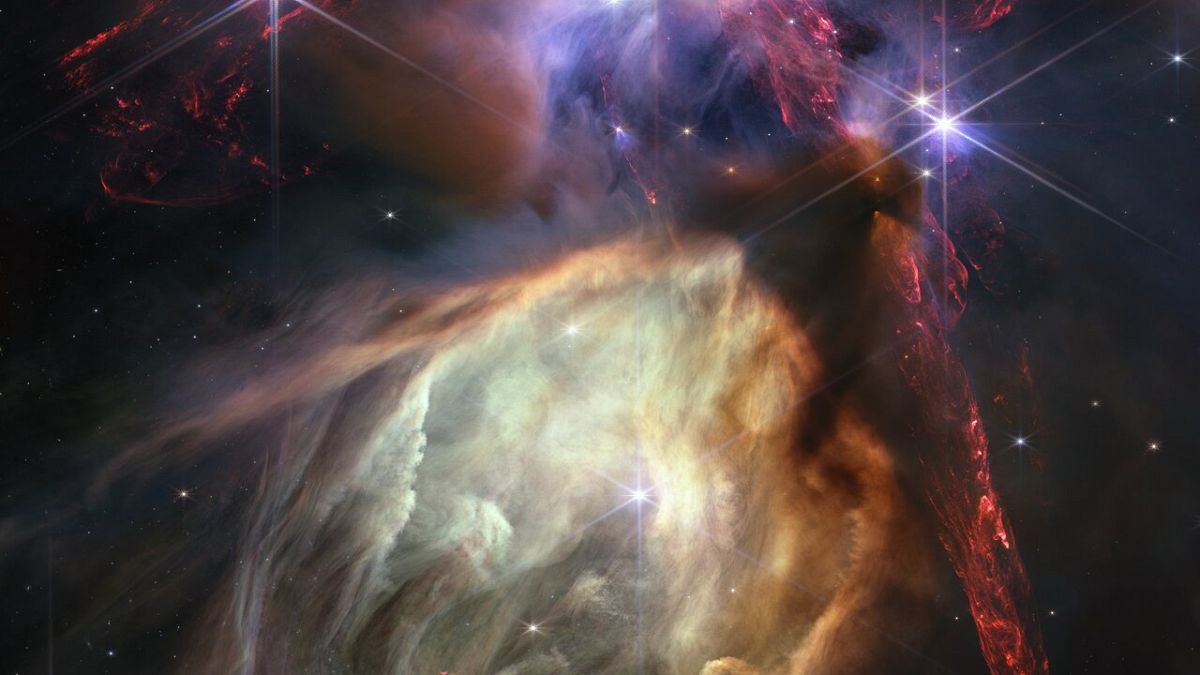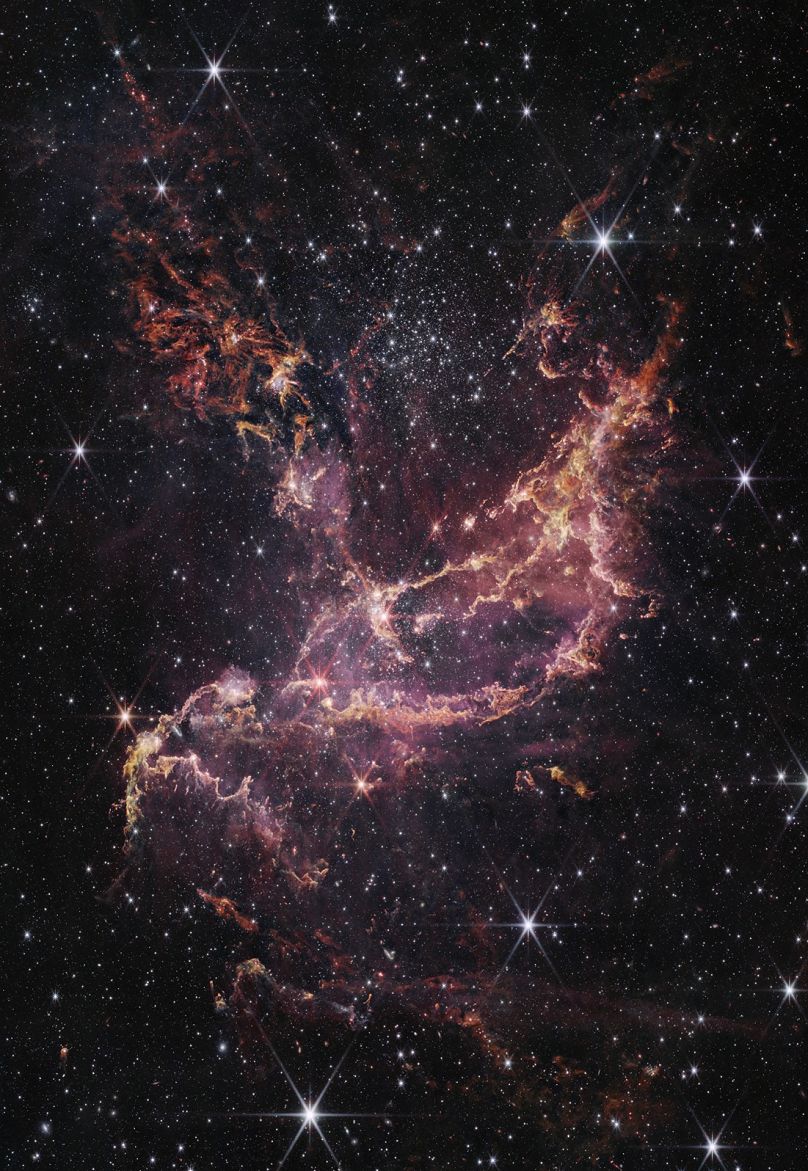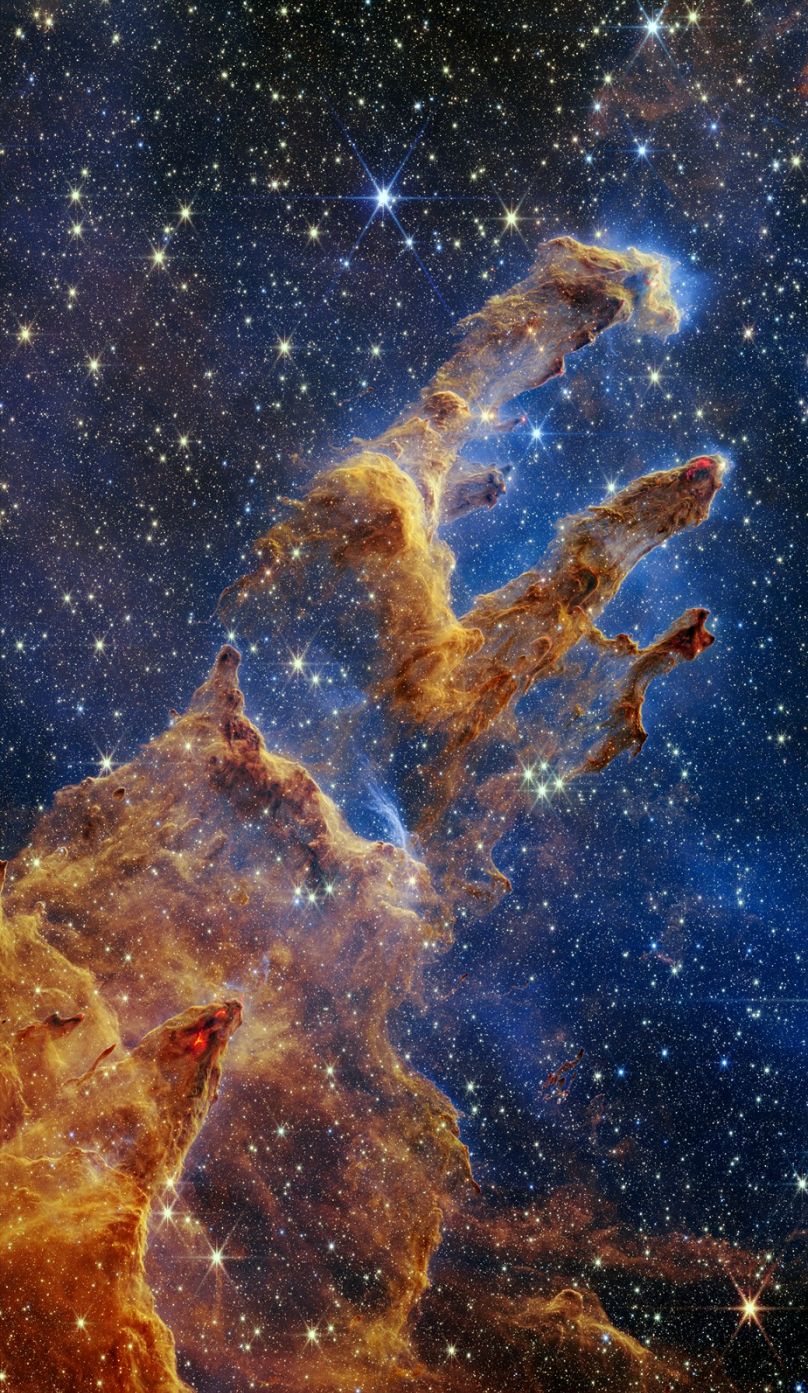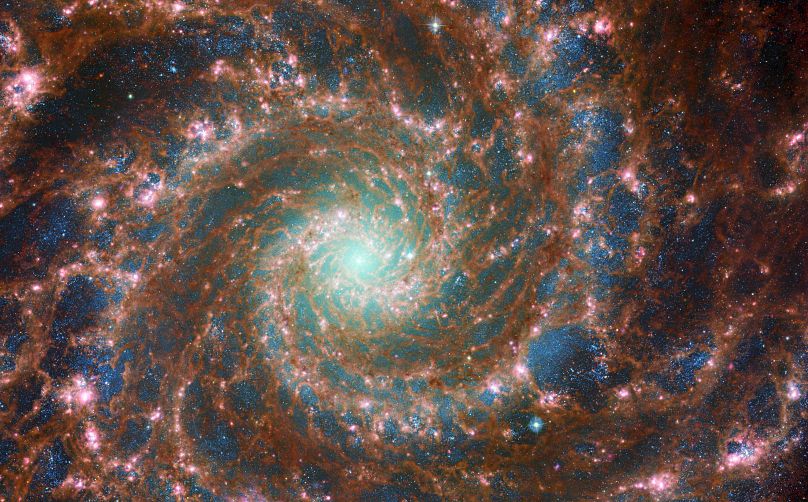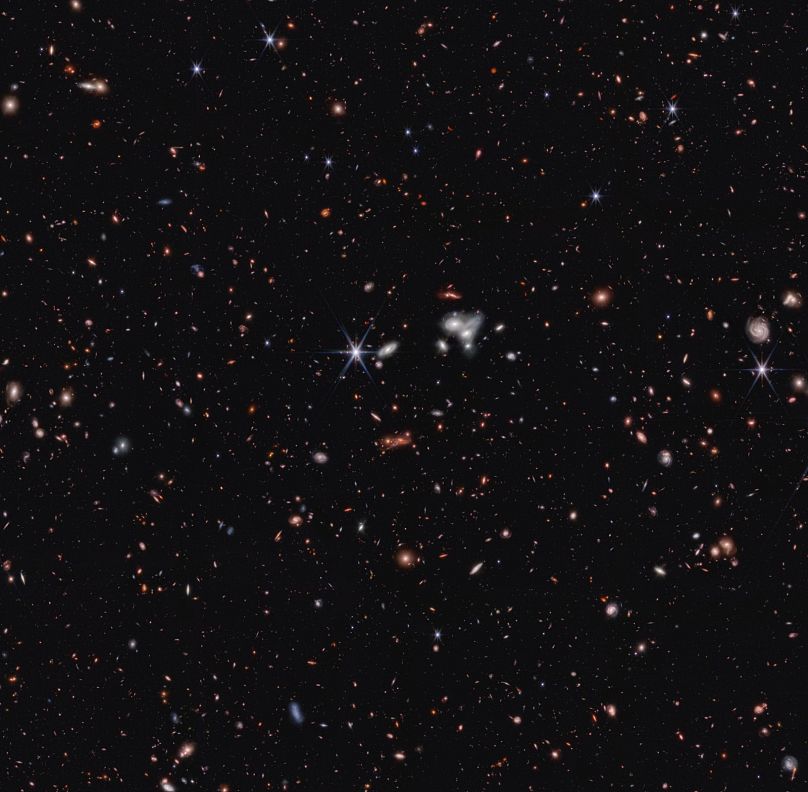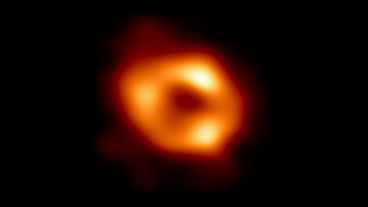One year of James Webb: Five things the space telescope has taught us since its first image
Exactly 12 months ago NASA released the first stunning image captured by the James Webb Telescope, which gave us a new understanding of the first galaxies to form after the Big Bang. Since then, it has helped us shed new light on the entire universe.
It’s been one year since NASA’s pioneering James Webb Telescope sent back to Earth its first stunning images from outer space.
The telescope, the result of nearly three decades of work with a price tag of €9.5 billion, has been able to show us the universe like no other instrument before, allowing us to peer at faraway galaxies and peek into how stars are born and how they die.
It was launched on Christmas Day in 2021 and reached its final destination in space, the Sun-Earth L2 Lagrange point, in January 2022. A few months later, it was sending back its first images, released on 12 July, 2022. That first image, unveiled by US President Joe Biden and NASA’s chief Bill Nelson, showed a 4.6 billion-year-old galaxy cluster called SMACS 0723. It was the first time we were able to see the faraway galaxy.
The James Webb has literally gone further than any similar instruments used by NASA before. On the day of this anniversary, the powerful telescope is still out there in space, orbiting the sun at 1.5 million kilometres away from our planet. Its predecessor, the Hubble Space Telescope, orbits around the Earth instead and is much closer to our planet.
“The JWST has given humanity its first high-definition view of the infrared universe”, Matt Greenhouse, who has served on the James Webb’s senior staff as a project scientist, told Euronews Next.
On the anniversary of the first picture from the telescope, NASA released a new one, showing the Rho Ophiuchi cloud complex, the closest star-forming region to Earth. In a statement accompanying the image, NASA called it “a dynamic image that belies the region’s relative quiet – and practically begs for explanation of what exactly we are looking at”.
Here are five things that we’ve learned thanks to the breathtaking images that the telescope has given us.
1. How the universe looked during its early stages
An image released by NASA on January 11 showed us NGC 346, a young cluster of stars that lies within a nebula some 200,000 light years away from our planet.
The image is considered of crucial importance for scientists, who believe the star cluster can give us an idea of how the universe looked during the so-called “cosmic noon,” a period of galaxy formation that followed the end of the “cosmic dawn” and went on until three billion years after the Big Bang.
According to NASA, the image taken by the James Webb Telescope revealed “the presence of many more building blocks than previously expected,” including stars and planets “in the form of clouds packed with dust and hydrogen”. That means that the telescope might have given us an idea of the process of not only how stars are formed, but also planets.
2. How stars are formed
In over a year out there in space, James Webb captured two images of the Pillars of Creation, which were first made famous by images taken by NASA's Hubble Telescope in 1995. The three towers of cool interstellar gas and dust stand light-years tall within the Eagle Nebula.
The image from the James Webb telescope allowed us to look far deeper within the pillars, showing us where new stars are forming within their dense clouds.
Building on images taken in 1995 and 2014, Webb’s new view of the Pillars of Creation is helping researchers update their models of star formation by identifying far more precise counts of newly formed stars, along with the quantities of gas and dust in the region.
Over time, they will begin to build a clearer understanding of how stars form and burst out of these dusty clouds over millions of years.
3. What’s at the heart of a galaxy
James Webb has allowed scientists to look deeper into galaxies than any other instruments before, as in the case of the astounding image of the so-called Phantom Galaxy (M74).
Webb’s ability to pick up longer wavelengths of light allows scientists to pinpoint star-forming regions in galaxies such as this one, revealing masses of gas and dust in the galaxy’s arms, and a dense cluster of stars at its core.
4. What planets outside our solar system look like
NASA has also released unprecedented observations of a planet outside our solar system, making use of James Webb’s powerful infrared gaze to reveal new details that ground-based telescopes would not be able to detect.
The image of exoplanet HIP 65426 b, a gas giant about six to 12 times the mass of Jupiter, is the first time the Webb telescope has taken a direct image of a planet beyond the solar system.
5. What’s inside a black hole
An image released by NASA in early July of the galaxy CEERS 1019, which existed just over 570 million years after the Big Bang, shows us the most distant active supermassive black hole to date.
The black hole is “less massive than any other yet identified in the early universe,” NASA wrote, adding that it clocks in at about 9 million solar masses, “far less than other black holes that also existed in the early universe and were detected by other telescopes.”
Supermassive black holes typically contain more than 1 billion times the mass of the Sun, and they’re much brighter than those spotted by the telescope. The one within the CEERS 1019 galaxy is much more similar to the one at the centre of our Milky Way galaxy, which is 4.6 million times the mass of the Sun.
“Though smaller, this black hole existed so much earlier that it is still difficult to explain how it formed so soon after the universe began,” NASA wrote. “Researchers have long known that smaller black holes must have existed earlier in the universe, but it wasn’t until Webb began observing that they were able to make definitive detections.”
Thanks to the image provided by the James Webb Telescope, experts could untangle which emissions in the spectrum are from the black hole and which are from its host galaxy, as well as determine how much gas the black hole is ingesting and determine its galaxy’s star-formation rate.
“Looking at this distant object with this telescope is a lot like looking at data from black holes that exist in galaxies near our own,” said Rebecca Larson of the University of Texas at Austin, who led this discovery, as quoted by NASA. “There are so many spectral lines to analyse!”
